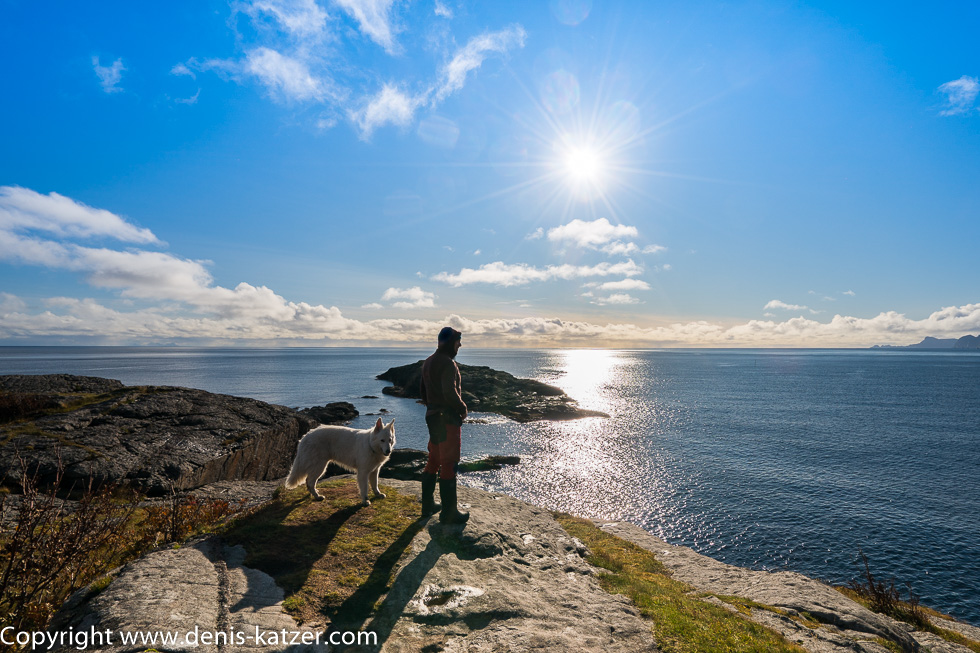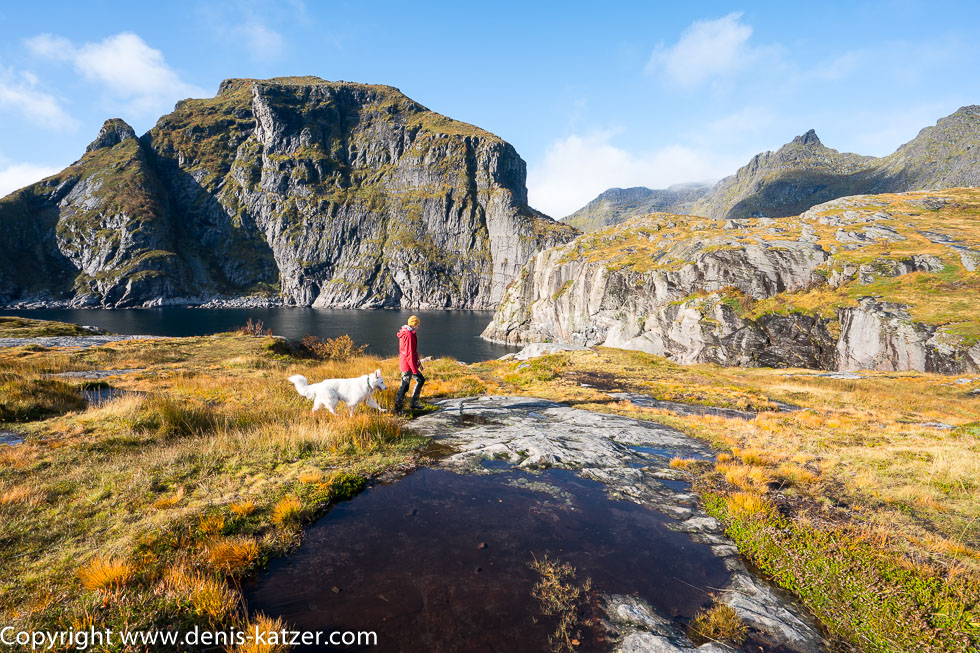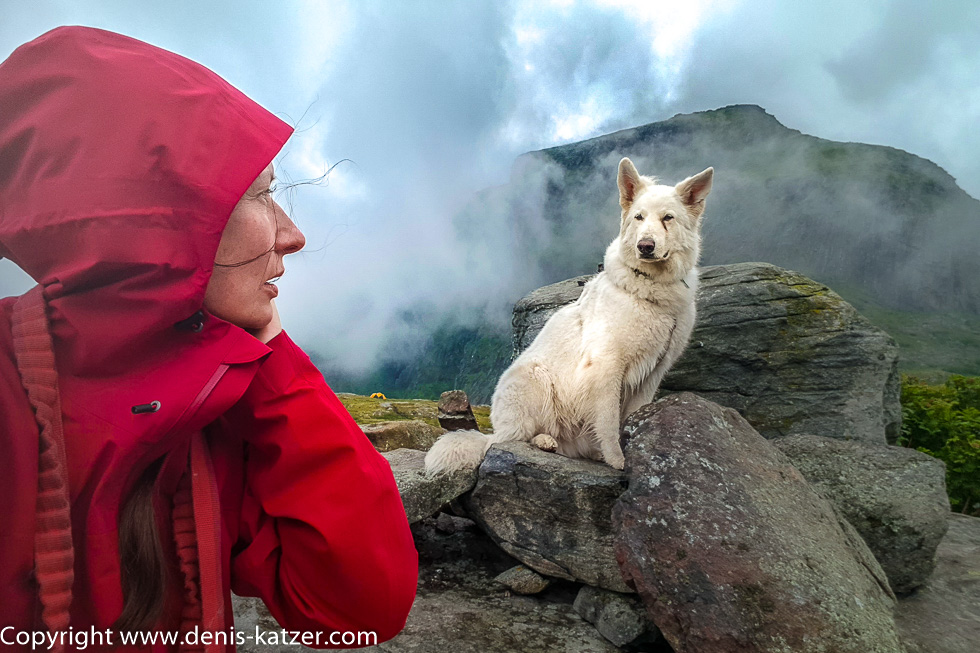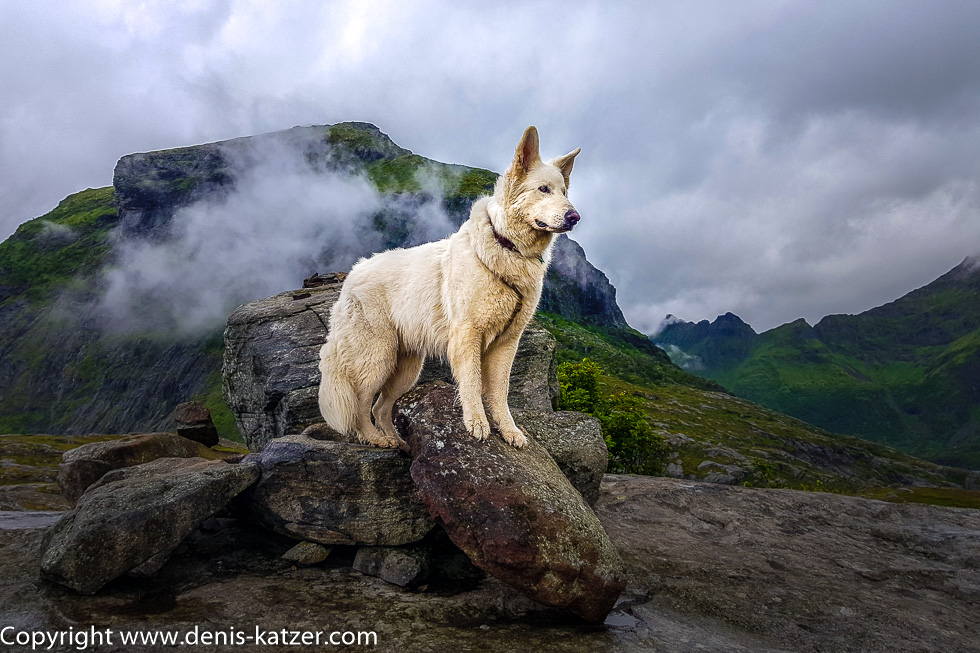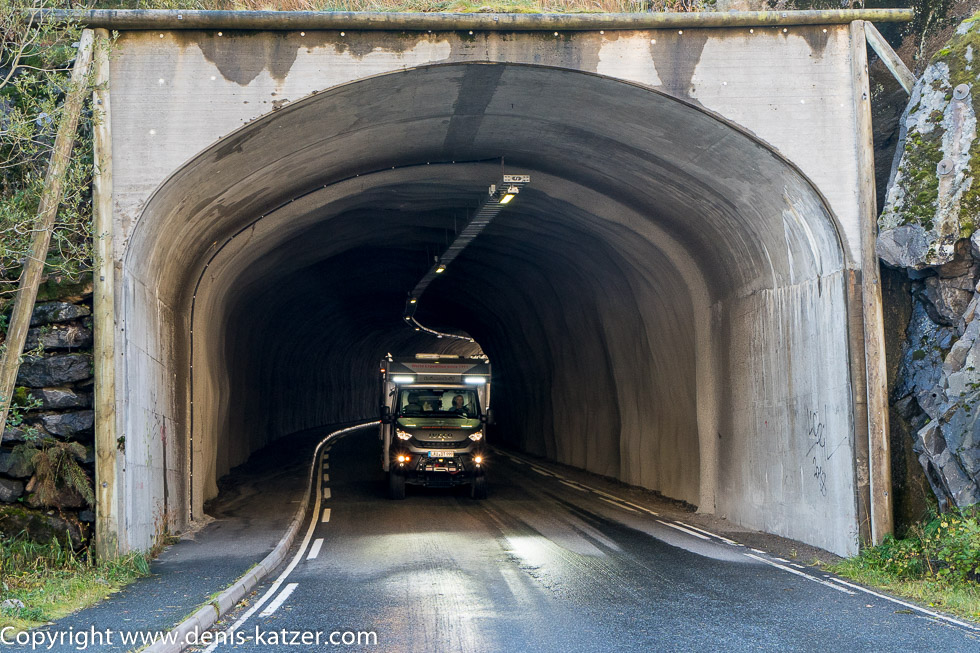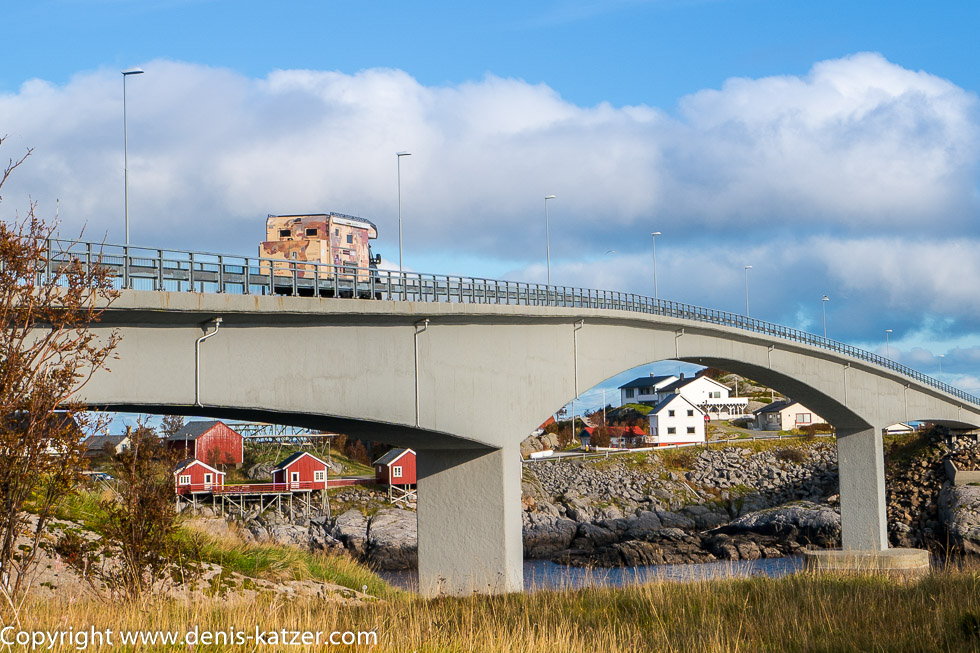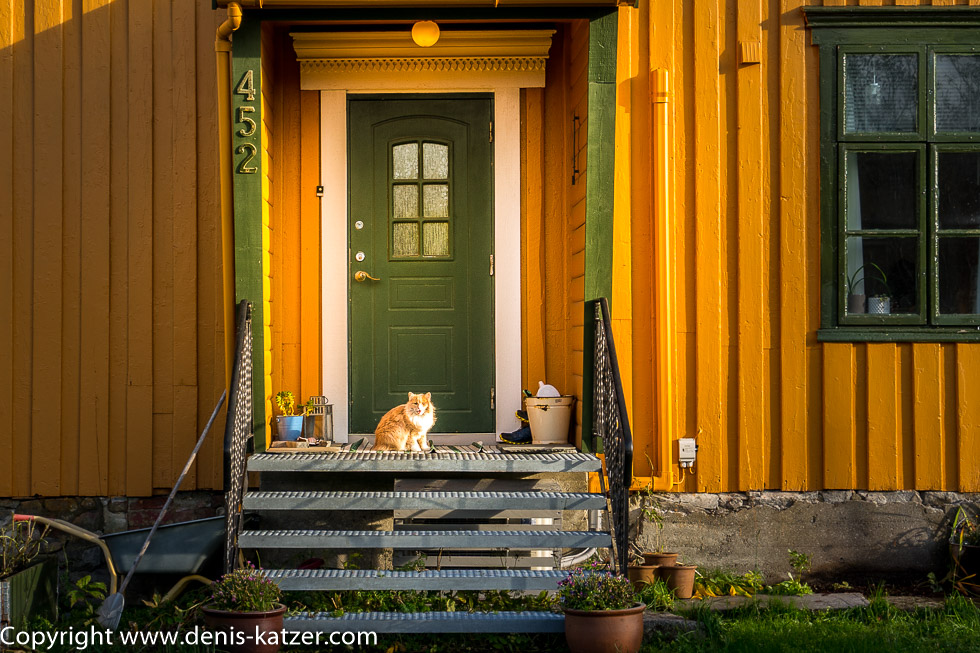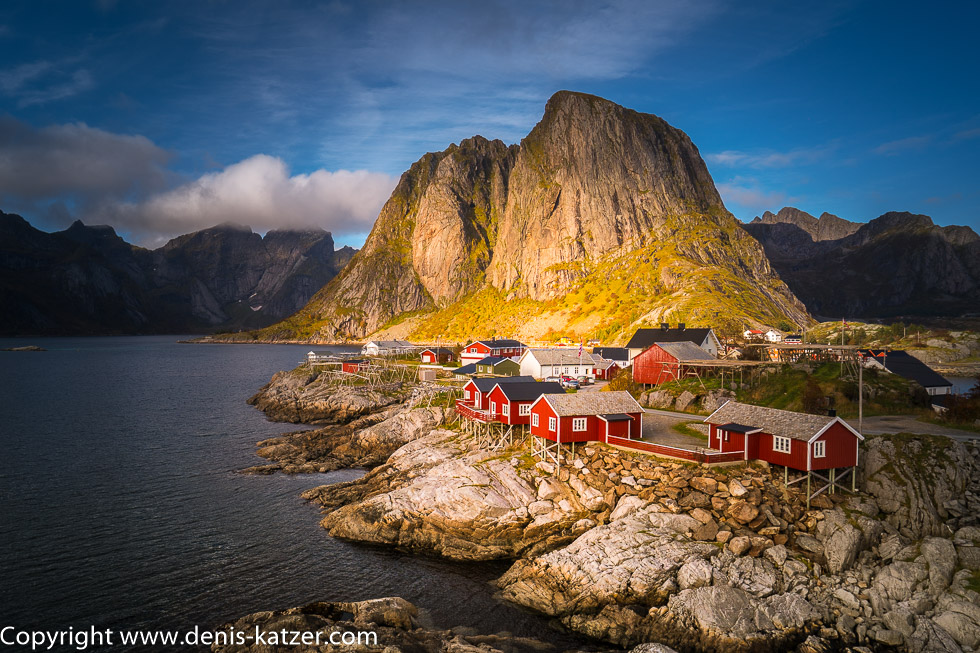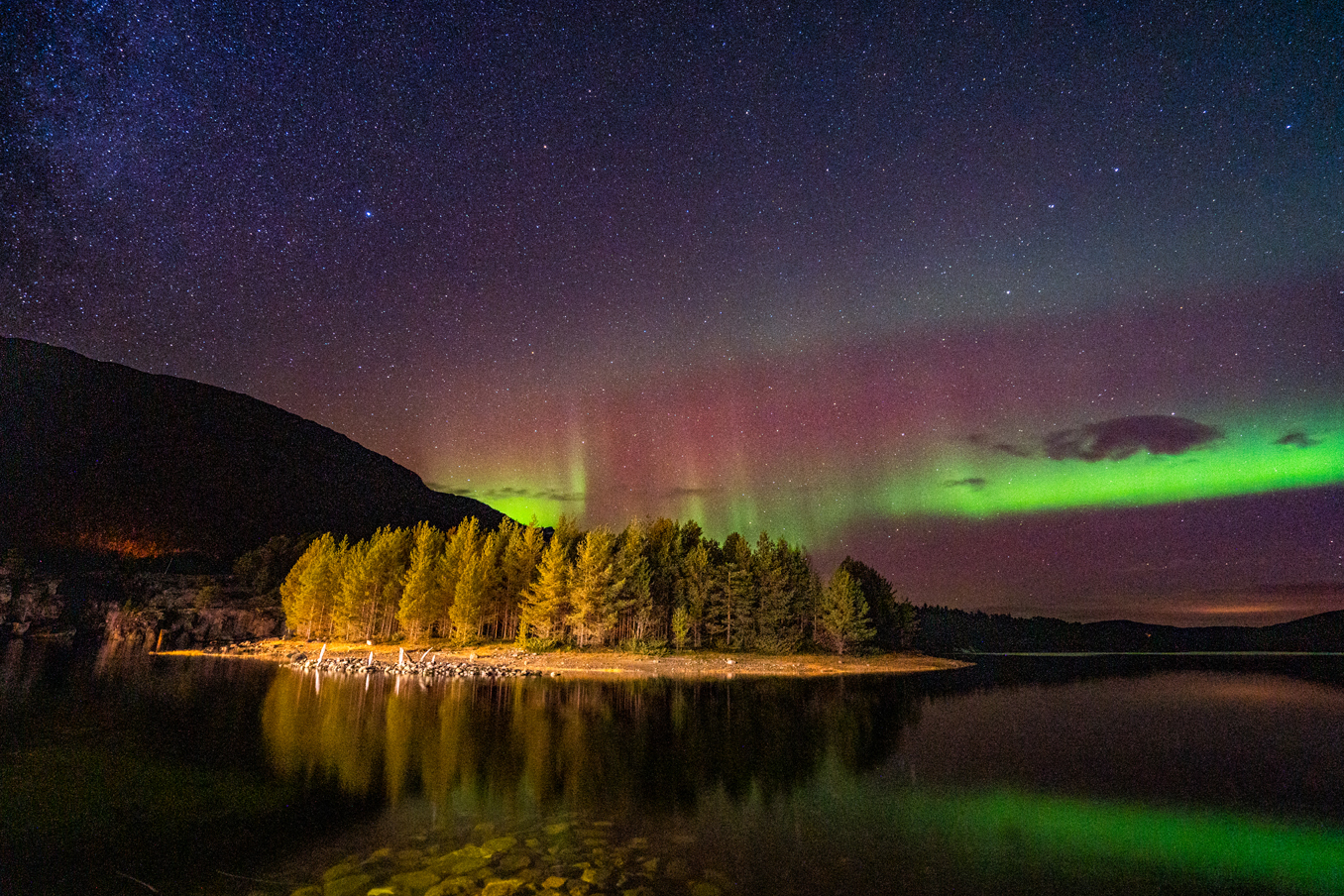
Paradise islands of the Northmen
N 68°06'14.6'' E 013°17'02.0''
Date:
26.09.2020
Day: 055
Country:
Norway
Location:
Flakstad rest area
Daily kilometers:
43 km
Total kilometers:
5046 km
Soil condition:
Asphalt
Ferry
0
Bridge crossings:
4
Tunnel passages:
9
Sunrise:
06:55 a.m.
Sunset:
7:02 pm
Temperature day max:
7°
Night temperature min:
4°
Gusts of wind
100 km/h
Departure:
16:45
Arrival time:
19:50
(Photos of the diary entry can be found at the end of the text).
Click here for the podcasts!
Link to the current itinerary
(For more posts click on one of the flags in the map)
After the constant rain of the last few days, we use the first rays of sunshine to remove the moisture that has collected in the cabin. We open the windows, skylights and flaps to the storage space under the bed to let in fresh, dry air. Then we dry the towels with which we constantly mopped the floor, because after every walk with Ajaci, wetness came into our little house. We hang the damp rain gear, Ajaci’s dog bed, hats etc. on the underride plates attached to the outer wall of the Terra. Immediately afterwards, I do my sport as I do every morning. Then we have breakfast and while Tanja washes the dishes, I download an aurora app on my smartphone that was recommended to us by a traveler. “So, how are things looking tonight?” asks Tanja. “I don’t know, I have to familiarize myself with the app first,” I reply, swearing quietly to myself, as the whole world seems to consist of nothing but apps and each one works differently. “So, if I understand correctly,” I say after a while, “the Kp value for tonight is 4 out of 9. I think that’s a pretty good value and we should have a serious chance of actually seeing the northern lights.” “Great. Now we just need a suitable place for the possible sighting,” says Tanja happily. “That will be the challenge of the day, because how are you supposed to find a place like this?” I ponder. “We simply let our gut feeling guide us. Regardless of that, what was the Kp value again?” “The Kp value or Kp index is a planetary index. So K for index number and P for planet. It is a measure of geomagnetic activity, which is determined by 13 observatories scattered around the earth and is recognized as an important measure,” I recapitulate in high spirits due to the good prospects of seeing the Northern Lights for the first time in our lives.
Before we set off to hunt for the Northern Lights, we say goodbye to the village of “Å” with a short hike to the coast, exactly where we were able to take fantastic photos last year. We enjoy the view of the European North Sea, which has calmed down again after the violent storm of the last few days. Although it is already midday, today’s glistening ball of sunlight is still quite low and casts a glittering beam onto the seemingly endless expanse of water. It is not easy for us to leave such places of natural beauty. However, we have one goal and that is the world-famous Northern Lights.
In the early afternoon, we leave the empty large parking lot behind us, roll through the tunnel and pass the well-known “Å” sign, where the odd tourist can be photographed during the season. “Do you think we’ll ever come here again in our lives?” asks Tanja. “I don’t think so, but who knows where the river of life will take you?” I reply, looking forward to exploring Lofoten for ourselves.
Because the ferry took us from Bodø to the southern tip of Lofoten this year, we are starting our tour from the back to the front, so to speak, from the sea to the mainland. It is a region with 80 islands, which translates as lynx foot. “How far are we actually from the Arctic Circle here?” Tanja interrupts the hum of the engine. “That depends on which island we’re on, but the archipelago is located between the 67th and 68th parallel, so about 100 to 300 kilometers north of the Arctic Circle,” I reply, stopping at a red light. In front of us, a single-lane asphalt strip leads over one of the many bridges that bend over one of the numerous fjords, but often also connect the individual islands with each other. “Looks like an interesting bridge. What do you think about taking a picture when I cross it?” “You mean I should get out, walk to the other side and take a picture of the Terra as you drive her across the bridge?” “Something like that,” I reply with a grin. “No problem. I’ll do it,” says Tanja, grabs the camera and the radio and jumps out of the cab. “When the traffic lights turn green, I’ll let you know,” I say into my walkie-talkie. “Roger,” comes the reply through the small loudspeaker. When the traffic lights turn green, there are two cars behind me. I wave them past because the picture looks better when the Terra crosses the bridge on its own. As soon as the cars have passed, the lights turn red again. “What’s wrong? Why aren’t you coming?” asks Tanja. “There were cars behind me. Come with the next green phase,” I say. After two more sets of traffic lights, my chance has come. The Terra’s engine howls and I head over the bridge. “Have you got some photos in the box?” I ask Tanja as she gets back in. “I hope so,” she replies, handing me the camera. “Looks good,” I say, looking at the pictures with satisfaction. “Sometimes we go to a lot of trouble to get a good picture,” Tanja chats as we drive on. “That’s true, especially when you have to chase after the Terra on mountain passes,” I say sympathetically. “Oh, I don’t mind at all. On the contrary, it keeps me fit. So don’t worry about it. Compared to you, I’m doing much better in this case. I’m glad I don’t have to spend hundreds of hours labeling and editing the pictures. I really enjoy walking over a bridge every now and then.” “It’s nice that you recognize that, but you could drive the Terra over bridges and mountain passes just like me.” “I could, but I’d much rather you did it.”
In today’s good weather, we enjoy the drive across the beautiful island world. We pass rust-colored fishermen’s huts, most of which offer accommodation to summer tourists. Sometimes they stand on wooden pillars on cliffs right on the shore of a fjord. Massive rocks and alpine mountain ranges tower picturesquely behind the huts, some of which are over 1200 meters high and stretch their sometimes pointed, jagged and rough heads into the sky. Wisps of cloud ensnare many a mountain, seeming to hold on tightly with their misty arms until they are carried away by a breeze.
We drive through tunnels that pierce mountain massifs and, like the bridges, also connect one island or another. From time to time we pass small hamlets that seem deserted and bear witness to the fact that only around 24,000 people live on the 80 islands. Because the former inhabitants had cut down the forests for building houses, ships and dry frames for stockfish, they were barren and bare. Today, the islands have almost recovered from overexploitation and since 2018, the west coast of the southernmost island of Moskenesøy, where we are currently located, has been a national park in Norway.
A suspension bridge carries us to the small island of Flakstadøy, which is home to just over 1,000 people. This small archipelago, 14 kilometers long and 8 kilometers wide, is literally segmented by two fjords. “What a landscape,” enthuses Tanja. We cruise along slowly, soaking up the everlasting beauty that this part of our Mother Earth has been gifted with. White sandy beaches nestle on the edges of the rugged and rocky island, which falls into the European North Sea. If it were warmer, we would stop here immediately for a swim, but now, at the end of September, it’s a little too cold for that at 7 degrees above zero. “A fantastic place to enjoy the midnight sun,” I say. “It would be great to be there in summer,” Tanja interjects, “when is the midnight sun visible?” “Between May 27 and July 17, the lowest point of the sun is above the horizon line.” “That means it doesn’t set for 22 days?” “Yes, exactly, and if we’d had more time last year, we could have watched the spectacle,” I reply. “But last year we were on our off-road expedition in the Russian Arctic Circle. You can’t have everything,” Tanja replies. “True, but it would be nice to have everything.” “You’re a glutton for punishment.” “That’s true too. I’m always hungry. Speaking of hunger. Should we stop somewhere and make ourselves something to eat?” “I think it would be a good idea to look for a place to stay for the night.” “Already now? Isn’t that a bit early?” “If we want to go aurora hunting today, it would be good to find a good spot in good time, don’t you think?” “Yes, you’re right. So let’s keep our eyes open,” I reply, steering the Terra along one of the beautiful sandy beaches. Then the Nappstraumtunnel swallows us up. It is one of over 900 tunnels in Norway. “It takes us under the sea,” says Tanja, as it descends for a considerable length of time at a gradient of around 8%. “Yes, it’s almost a little scary when you consider that just a few meters above us, the huge sea is exerting enormous pressure on this little tube,” I consider as we reach a depth of 63 meters. “It’s amazing what we humans can build,” says Tanja, fascinated. “Absolutely. But this tunnel is still small. There is the Eiksund Tunnel on the west coast. The undersea tunnel is 7,765 meters long and is 287 meters under the sea at its deepest point.” “The longest and deepest tunnel in the world,” says Tanja. “Wow, how did you know that?” “I was paying attention when you told me that.” “When did I tell you that?” “Well, last year, when we drove through it.” “That’s right, I remember,” I reply as the connecting tunnel between the island of Flakstadøy and the island of Vestvågøya spits us out into the light of day after 1,776 meters. “Vestvågøya is the largest island in Lofoten. “We’re sure to find a spot here for our aurora hunt tonight,” I say confidently. “There, was that a place?” I shout as I drive past, pointing to a small plateau that rises a few meters above the sea. “Looked good,” Tanja confirms. A few hundred meters further on, I turn around and drive back to the spot I spotted. “Great. Great view over the sea. You can definitely see the aurora. We’ll stay there. What do you think?” I ask Tanja. At that moment, a small car parks next to us. Two pretty young twin sisters, with long blonde pigtails, in full outdoor gear, get out of the car and get ready for a hike in the mountains, apparently with their two small dogs. “Should we ask them twice if we can see the aurora here?” “Good idea,” says Tanja. “Yes, this is a very good place,” confirm the two beauties, “but there’s a beach a few hundred meters down the road. You might even be able to see the reflection of the Northern Lights on the water.” “Great, we’ll go there then. Thanks for the tip,” we thank them. “You’re in luck. Today is a very good day to see the aurora,” one of the twins motivates us as we are about to climb back into the Terra. We actually reach a fantastic spot right by the sea. We park the Terra and immediately set off for a long walk on the beach with Ajaci. “What a fantastic location,” enthuses Tanja. At this moment, the day’s fading rays of sunlight set their sights on a bare, treeless mountain range on the other side of the bay, which glows in the reddish-brown light. “Shines like Ayers Rock in Australia,” I say, snapping a few photos. The twilight creeps more and more over the mountain ridges, spreading its warm light over the North Sea. Then the sun star, 150 million kilometers away, sinks behind a jagged rock massif, throwing a few last rays into the still cloudy sky, making it flare up in orange, purple and golden yellow to say goodbye to our side of Mother Earth for today. “Wow,” Tanja says quietly, hugging me. “Wow,” I reply reverently and am glad to be able to experience moments like this. “Let’s go back to Terra,” says Tanja. “Good idea. I still have to set up the cameras for tonight. I hope the clouds will clear,” I reply, looking up at the now gray evening sky, which is increasingly being conquered by dark clouds…
